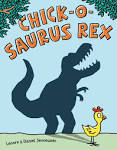 I am far from a pro as far as baking is concerned, but I do believe it is a little bit magical so a graphic novel that follows a magical intern in a kitchen couldn’t go wrong with me.
I am far from a pro as far as baking is concerned, but I do believe it is a little bit magical so a graphic novel that follows a magical intern in a kitchen couldn’t go wrong with me.
It turns out baking is both science and magic, at least according to the wizard in this enchanted kitchen. I admit, I made a lot of the mistakes Sage makes in the book myself. The big mistake that I seemed to make again and again over the years is skipping over (or not quite following certain directions) because you don’t think they’re important. When you are faced with a final product that is flat when it is supposed to be fluffy or dry when it’s supposed to be moist, you start to realize that every bit of the directions are important. Fortunately, there are books like this one that tell you why they are important—from why butter should be at different temperatures for different recipes to how the amount or type of flour you use will affect your cookies. Readers don’t have to ruin a whole batch of cookies to learn like I did! Plus, there’s a bit of fun and silliness in the mix. Win-win.
Baking just may be the closest we can get to magic here in the real world, so wanna-be wizards should consider the kitchen and fire up their stand mixers. I know I will. As the baking wizard says: “Not magical? Baking is a tangible form of magic! It is alchemy! Transforming basic into fantastic! Inedible to delicious!”
Now I’m off to try one of the 8 recipes included in the book. :)


 It’s been a few months since then, but I finally got my hands on a copy of
It’s been a few months since then, but I finally got my hands on a copy of 












